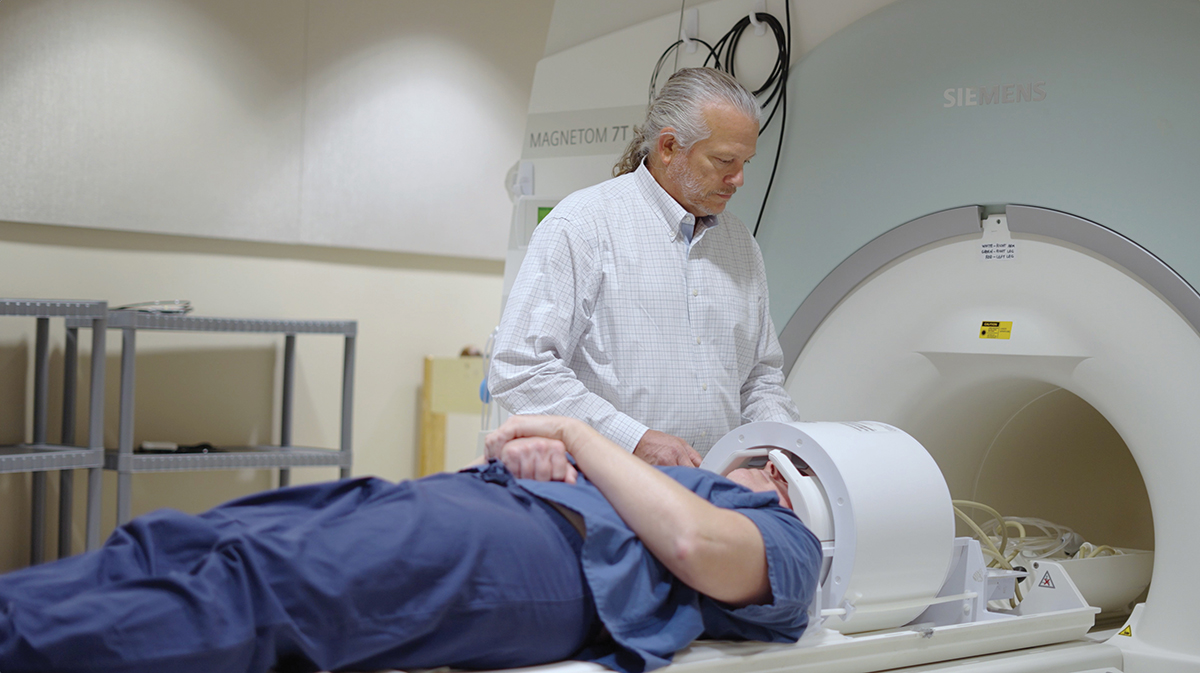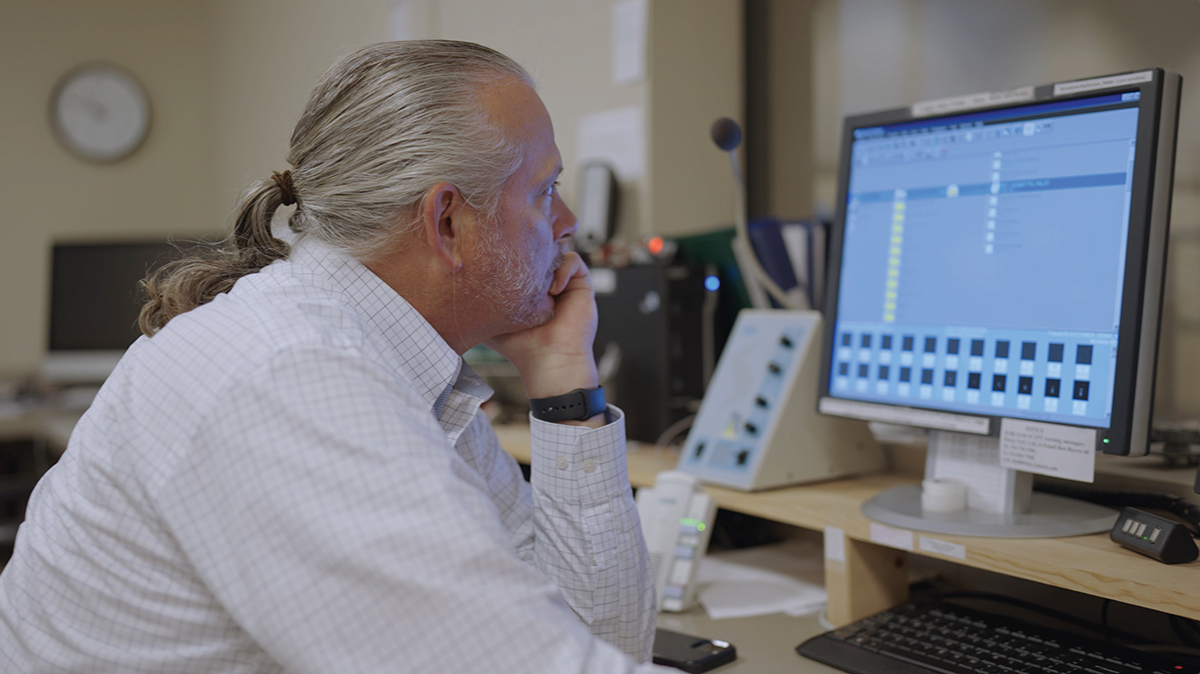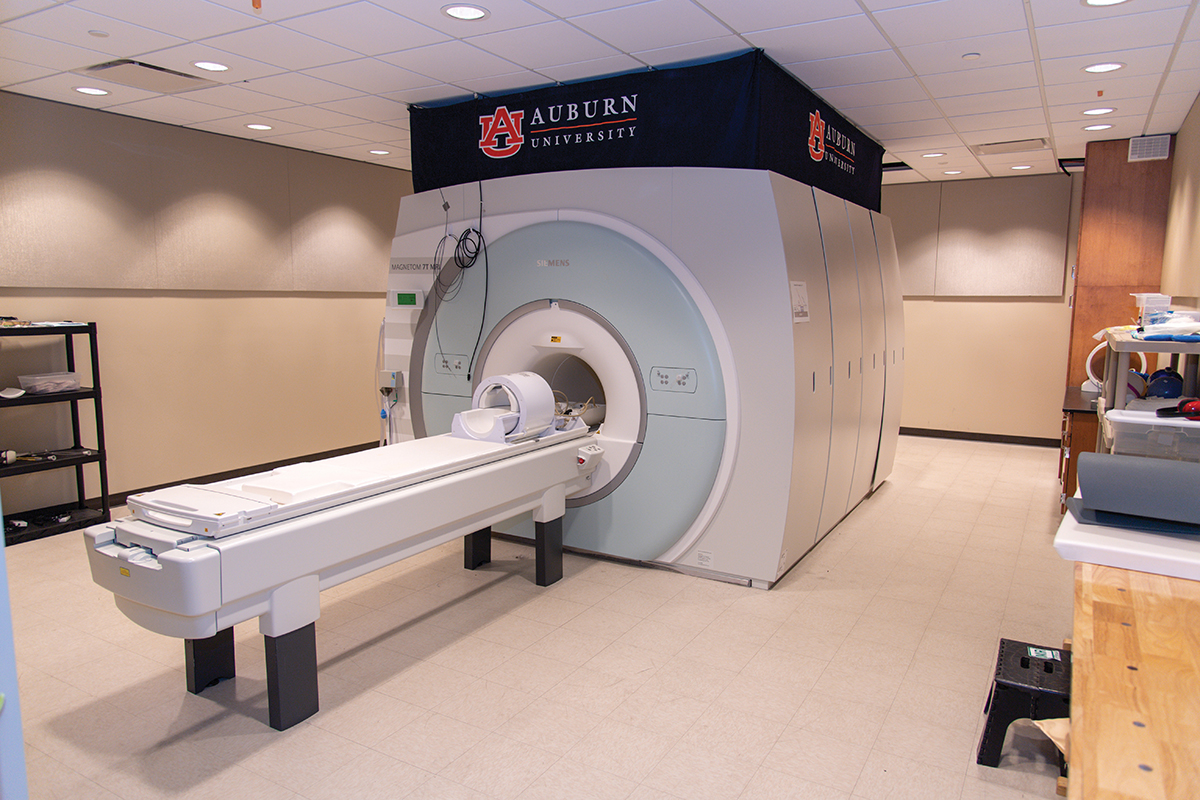
Pulmonary hypertension kills roughly 15,000 Americans each year. A researcher at Auburn University, however, has a potential solution.
Tom Denney, the Mr. and Mrs. Bruce Donnellan and Family Professor of electrical and computer engineering, and director of the Auburn University MRI Research Center, believes MRI testing is vital to early detection while routine physical exams rarely reveal the arterial disease.
“Many are not even aware they have pulmonary hypertension,” he said. “If you don’t know you have the disease, then you can’t seek early treatment.”
Pulmonary hypertension is a type of high blood pressure that affects the arteries in the lungs and the right side of the heart which can lead to heart failure, blood clots, arrhythmia and more. Treatment includes a variety of medications, or even surgery, depending on the severity and stage of detection. A common symptom is shortness of breath.
“Physicians must go through a large diagnostic algorithm to determine what might be wrong,” Denney said. “Patients might be subject to heart catheterizations, which are quite invasive and are not pleasant.”
Denney, an electrical engineer and marketing representative for the IBM Corporation before pursuing academia in the late 1980s, has a better idea.

Through 10 years of collaboration, he and a team of cardiologists at the University of Alabama at Birmingham (UAB) created Arcus-Med LLC, a start-up that utilizes MRI technology to measure expansion and contraction of arteries leading from the right side of the heart to the lungs, and the blood flow profile.
“Through a technique called phased contrast imaging — which measures the velocity of moving tissue, blood — these procedures can analyze blood flow through the pulmonary artery,” Denney said. “From those measurements, we get a quantity that’s related to the stiffness of the pulmonary artery.
“When blood flows, the ventricle contracts and the artery expands. When the valve closes and the ventricle fills with blood, the artery contracts and that keeps blood flowing — like a rubber band. A stiff artery doesn’t do that. What our MRI reveals is how stiff the blood vessel is. Heart catheterizations are invasive, so if we can reduce the number of heart catheterizations, there will be much interest in that.”
Denney said MRIs would not replace heart catheterizations, but should be incorporated into the physicians’ diagnostic algorithm.
MRIs could be performed prior to right heart catheterizations — providing doctors with information that could potentially be an early indicator of pulmonary hypertension or eliminate pulmonary hypertension as the source of the problem.
Denney is chief scientific officer at Arcus-Med, while other team members include: Simin Sanaye, CEO; Barry Kyu, director of business development and global alliances; Ford Fujii, director of global sales and business development; and Himanshu Gupta, chief medical officer.
Denney hopes the device can become mainstream one day in the medical community. He encourages innovators from all backgrounds, including fellow faculty peers, to pursue their entrepreneurial passions. It won’t be easy. It might even take years. But you never know when past relationships will come into play. It took Arcus-Med 10 years to move from idea among scientists to start-up with a patent.
“Be patient,” Denney said. “We came up with this idea years ago, and we thought it was a good idea. We started pitching it to people for grants, but we didn’t have any takers. People were saying, ‘Hey, this is a really good idea but we’re not really sure that it will work.’ But that’s the way it goes, you know? When you come up with an idea, you have to show that it works.”
During their fellowship at UAB, a cardiologist ran tests on a group of patients. Not only were the tests successful, but relationships built early in his career as an engineer at IBM proved fruitful.
“I worked with people in North Carolina’s Research Triangle Park – Raleigh, Durham and Chapel Hill,” Denney explained. “I don’t know how this happened, but somehow I connected back with them. These people had moved up the food chain professionally, did some great things at IBM, then retired and became investors.”
Now a full-fledged professor and MRI specialist at Auburn, the former sales representative pounced.
“I gave a presentation and showed them the technology we developed,” he said. “They said, ‘This is a great idea! We’d like to take it to market.’ So, here we are.”

Denney said if a researcher believes he or she has a viable business product tied up in a bow and ready to go, “You’re just getting started.”
“There is so much more than just creating a product,” he said. “You must navigate working with a variety of people — collaborators, potential investors, etc. — and sometimes people are working for free.”
For academic innovators, they must have a conflict-of-interest mitigation plan in place.
“Because when you work for a university, there are always rules you must adhere to,” he said. “For me, I didn’t find them particularly burdensome, but it might for others. There are regulations to follow. On one hand, people are saying, ‘If you want something, just go do it.’ Then, in the back of your mind you’re thinking, ‘Is this going to be a conflict of interest?’ But I wouldn’t let that discourage anybody who chooses to take the entrepreneurial route.”
Obtaining a patent, of course, brings credibility to any product, but it’s also a tedious process. Arcus-Med applied for a patent “two or three years ago” before finally earning the patent in January, Denney said.
“For those who apply, it’s going to be frustrating but you’ve got to keep hammering away at the process until it’s complete,” he said. “Just know that when you send your patent application, it’s not going to be immediately accepted. The patent office will find things wrong with it, but you’ve just got to respond and correct them. It’s wise to work with a patent agent because patent agents have a certain way of stating things. The field has its own lingo. You must understand the patent lingo to write an effective patent application.”
Denney, who earned bachelor’s and master’s degrees in electric and computer engineering at Auburn before earning a doctorate at Johns Hopkins, grew up wanting to fix stereo systems and never imagined he’d be exploring arteries.
“If you had told me back then I’d be doing this research, I would have laughed you out of the room,” he said.
“I’ve always been fascinated with technology. I was always a tinkerer, so I was always taking stuff apart and putting it back together,” he added.
Instead of rewiring tape decks and car stereos, he’s helping the human heart.